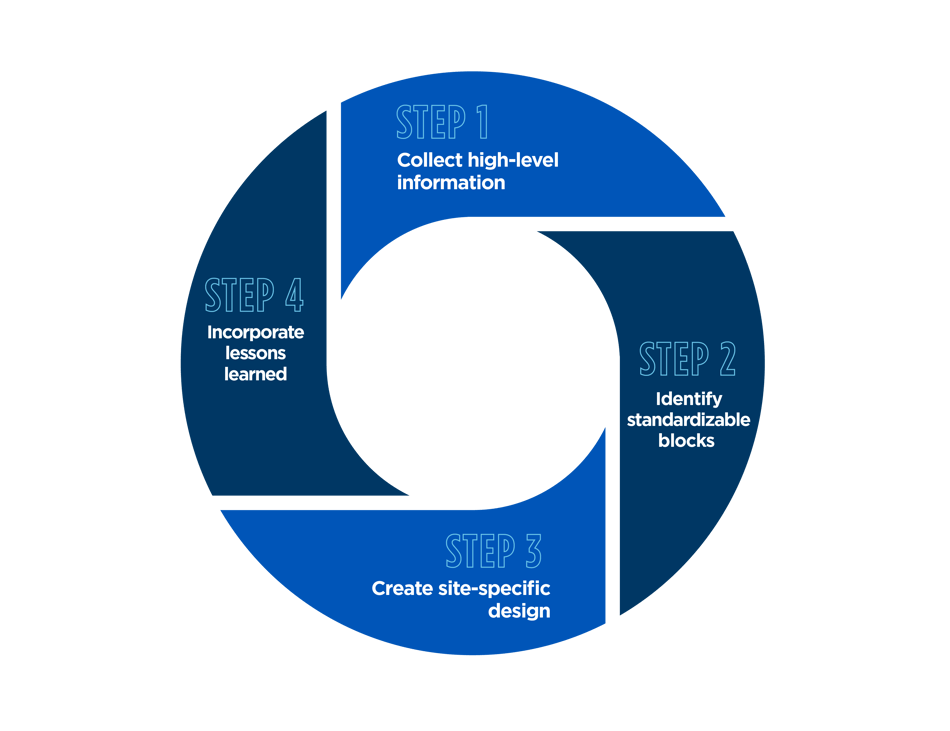The renewable natural gas (RNG) market is rapidly growing along with burgeoning interest in all forms of clean energy. Timing-based incentives for the market, such as those included in the Inflation Reduction Act of 2022, put a premium on designs that are adaptable, reliable, affordable and constructable.
Because RNG remains an emerging market, many owners and operators of RNG facilities are designing and developing them for the first time. Reliability is critical for RNG facilities — including biogas generation, upgrading and processing, as well as pipeline interconnects — because any downtime will require flaring of biogas, leading to additional emissions and loss of potential revenue. Keeping total installation costs low is also vital to justifying the business case for building a facility.
Building each new facility without consideration of previous or future projects is a recipe for inefficiency — both for the project and operations. By implementing a standardized design approach, owners stand to reap numerous rewards in terms of improved safety, lower costs and reduced project schedules.
Minimizing Risks and Improving Safety
While the potential cost and schedule savings for natural gas facility projects has been discussed elsewhere, the safety benefits merit additional discussion. Any rework during construction of an RNG facility increases the potential for accidents. New designs are more likely to require rework due to unforeseen site conditions, unfamiliarity with vendor equipment and lack of established standards. Rework requiring additional welds, cuts and more manual labor exposes construction personnel to greater risk of injury.
Repeatable designs reduce rework in several ways. By incorporating modular design techniques, some piping sections can be identical across multiple designs, allowing shop fabrication of several blocks at once. Standardized designs can incorporate lessons learned from past construction phases, improving constructability over time. Because they use and reuse similar equipment and materials, repeatable designs support operator and maintenance familiarity, further minimizing risks. Uniform designs simplify those activities and boost efficiency.
4 Steps Toward Standardization

The path to standardizing RNG facility designs will be smoother if the following four steps are kept in mind throughout the design and construction process:
- Collect high-level information. Planning is the key to successful standardized design. It is important to understand all variables, including the number of RNG facilities that will be planned, the locations and variances among sites, and operational preferences for each site. These details can be used to identify similarities and potential blocks or modules that could be standardized. This is also the right time to gather feedback from all operators and interested parties to understand their requirements for the facilities; waiting to get feedback later will negate some of the benefits of standardized design. It is helpful to create a construction schedule of all facilities within the program and identify groups of sites that can be constructed together. Staggering construction between groups enables implementation of lessons learned, leading to more efficient designs through iterative steps.
- Identify standardizable blocks. The next step is to identify elements that could be standardized across the facilities. Are there any piping configurations that could be identical across sites? Are there any pieces of equipment or materials that could be standardized across designs? If design conditions are similar between sites but not identical, are there options that could accommodate both sites? Once potential blocks are identified and agreed upon, they should be designed, reviewed and locked in.
- Create site-specific designs. Gather site-specific information for the first group of facilities and locate the blocks on the sites. It is useful to generate a list of requirements based on previously gathered feedback, then aim for alignment through plan or model reviews on a site-by-site basis. Take note of any similarities that could be used for a more efficient design in the next batch of facilities.
- Incorporate lessons learned. During construction, keep track of findings that could be incorporated into the next group of facilities. Plan to meet with all relevant parties to identify any additional changes needed. Upon achieving alignment, use strict change management procedures to update the standardized blocks for future projects.
RNG facilities represent significant investments. Those investments are increasingly being made as the market demand for cleaner energy intensifies. Developing standardized designs requires some upfront effort, but the benefits in terms of project cost, schedule and safety are well worth that expense.
Utilities have a variety of options they can pursue to procure RNG or pay for projects to build RNG facilities.

